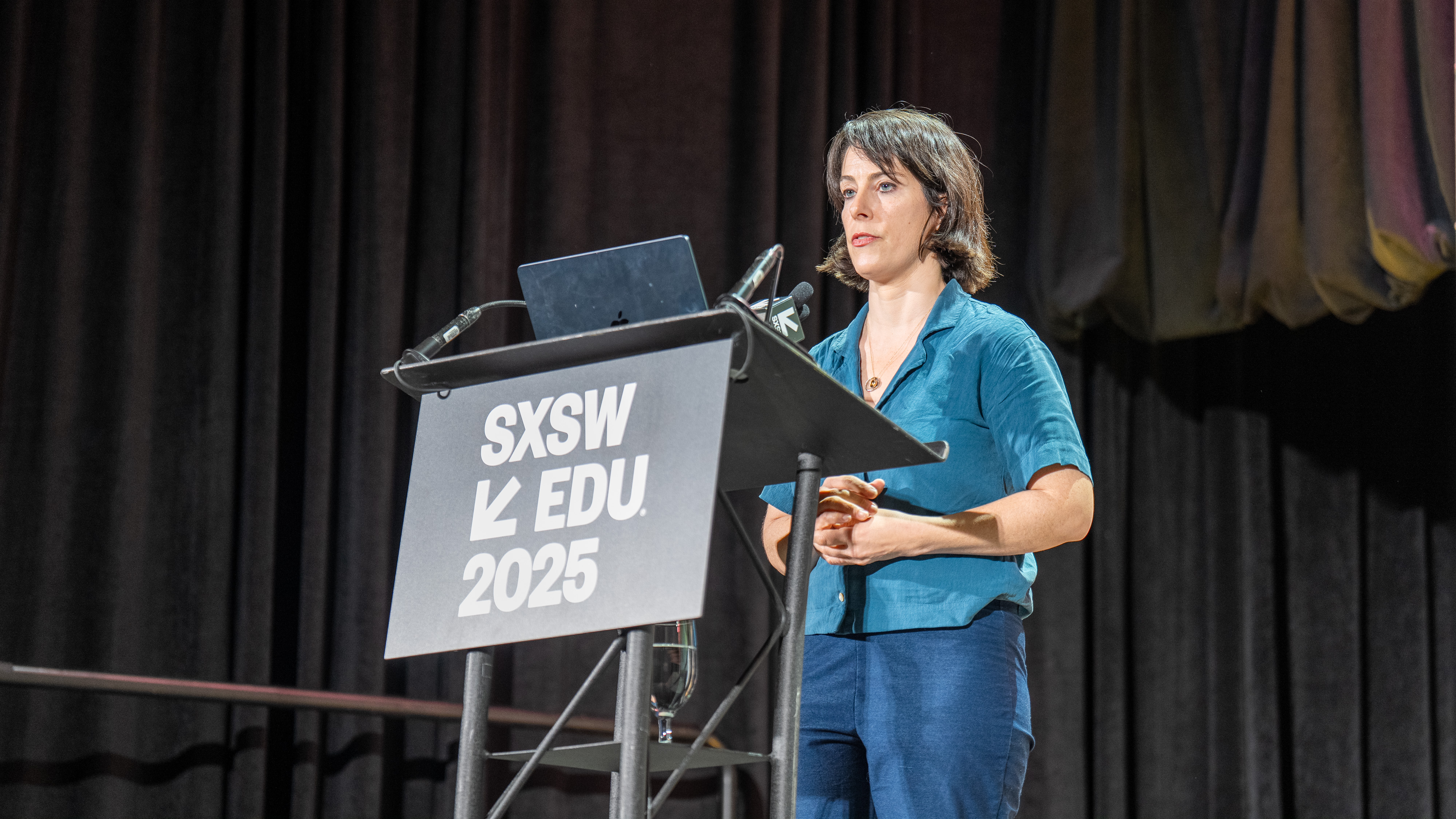
SXSW EDU represents the idea that education is one of the most important investments we can make for future generations. And with that conversation, it’s impossible to ignore the discussion around student debt and education accessibility.
At SXSW EDU 2025, writer and editor Ryann Liebenthal, explored the history, present-day realities, and potential future of student debt in the United States. Having written for The New York Times, Harper’s Magazine, Mother Jones, and The New Republic, Liebenthal offered a rich, historical context for educators and advocates seeking to understand how we got here, where we are now, and where we might go in the future.
The History Behind Student Debt
Liebenthal started by putting the student debt crisis in historical context, pointing out how, starting in the 60s and 70s, college students began shifting away from idealistic pursuits in favor of more financially lucrative degrees–away from the humanities. She mentions how “college students no longer had the luxury of following their passions, and business majors increased tremendously because they needed to make money” due to the framework of student debt.
Over the years, Liebenthal mentioned “private schools started marketing themselves like fancy cars,” pushing the idea that higher education was a status symbol rather than a foundational learning experience.
Behind this transformation, Liebenthal pointed to the powerful forces at play, governments, higher education institutions, and policy experts who have, in many ways, failed to address the root causes of student debt.
Inspiration for Solution
Liebenthal turned to solutions, and while some are seemingly impossible, she emphasized that they’re not out of reach.
- Liebenthal starts with the idea of a “massive new investment in public education at all levels.” She pointed out that many developed nations around the world provide free or heavily subsidized enrollment, and the U.S. should follow suit.
- One of her more controversial ideas was for private nonprofit institutions to either transition to public universities or forgo federal funding. Right now, many elite private schools are receiving substantial federal aid despite enrolling only a fraction of the student population.
- Lastly, she called for greater accountability for proprietary education institutions, advocating for a reduction in their influence over time.
Moving Forward
Though taking on such a complex issue at large, Liebenthal still emphasizes that none of these changes would happen on their own, and will take a collective effort from educators and policy makers. Whether it’s joining advocacy groups like the Debt Collective, reaching out to policymakers, or simply talking about the issue with others aligned as there is no better time than now:
"Because if we wait to construct a solution until the politics are in our favor, it'll already be too late."
Ryann Liebenthal
Author
Watch SXSW EDU 2025 On-Demand Content
Take a look back at SXSW EDU 2025 and relive exciting Keynotes, Featured Sessions, and more, now available to watch on our official YouTube channel, plus listen to hundreds of audio recordings in the schedule.
Stay tuned for more information about registration and participation opportunities for SXSW EDU 2026 coming later this summer.
Photo by Stephen Olker
